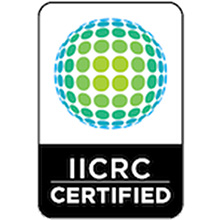Blogs and News Posts
Covid 19 Warning and Update 3/20/20 Terry Dee
As with anything, the web is a great resource of information but it is also a great resource for bad information. We are learning more and more about the coronavirus every day. But the fact is there's still a lot we do not know. Here is some clarification and what we have been able to verify ourselves.
Disinfecting: Cleaning is paramount regardless of what contagion or virus we are talking about so any cleaning, disinfecting and anti bacterial solutions you use is a step in the right direction. But we don’t know for sure if a bleach solution or a Lysol type product is effective enough. We do know this is a very resilient germ and can last a long time on surfaces and in the air. Some studies on other coronaviruses, including Sars and Mers, found they can survive on metal, glass and plastic for as long as nine days, unless they are properly disinfected. Some can even hang around for up to 28 days in low temperatures. Other studies show that the virus could survive in droplets for up to three hours after being coughed out into the air. Fine droplets between 1-5 micrometres in size – about 30 times smaller than the width of a human hair – can remain airborne for several hours in still air. There is also not a test product around to determine if a surface is virus free after being cleaned. We recommend that you follow the CDC’s guidelines for keeping yourself and your homes and workplaces clean.
Be Leary of companies that say they will clean and disinfect your place. Nobody can guarantee effectiveness. Again there is no test available and commercial chemicals are being purchased by the government to ensure they are used in the most important circumstances. Companies can clean and probably do a good job but cannot guarantee.
Masks: Wearing a face mask is certainly not an iron-clad guarantee that you won’t get sick – viruses can also transmit through the eyes and tiny viral particles, known as aerosols, can penetrate masks. However, masks are effective at capturing droplets, which is a main transmission route of coronavirus, and some studies have estimated a roughly fivefold protection versus no barrier alone (although others have found lower levels of effectiveness).
Finding Reputable Water Damage Companies 12/30/18 Terry Dee
Water damage companies often have to work in some grueling circumstances, but their efforts are essential to restoring the home to a healthy state. Floods, sewage backflows, leaky plumbing, or roofing and burst pipes can all cause a massive headache for a homeowner, and they need a professional who is skilled and honest. This is easier said than done as the industry lags behind in terms of oversight. However, there are some simple checks that a homeowner can use to determine whether or not they’re dealing with a reputable business.
What are the signs of reputable water damage companies?
Businesses that perform at a high level have little to hide, so they should be easy to contact and have an established website. As disaster can strike at any time, restoration technicians have to be on call around the clock. Reputable businesses will be available 24 hours a day most days, so the homeowner doesn’t have to wait. The critical period for preventing additional damage is 48 hours. After 48 hours, contaminated fluid will ruin many materials it soaks through, though some organic materials will deteriorate at a faster rate. It’s common for technicians to need to remove drywall, carpeting, baseboards, and casings, but many textiles are salvageable if the technicians respond quickly and the water causing the damage was not sewage.
If a company can dispatch technicians to the home right away and provide a detailed estimate of the process, this is a good sign. It takes a variety of skills to restore the home to a pre-loss state, which means the firm will have to maintain a highly skilled and well-trained group of professionals. If a company doesn’t offer all of the services needed to completely restore the home, find one that can. For example, if a firm can't remove mold or other microbial threats, your family may be at a major health risk, even after everything is dried and put back to normal.
In general, homeowners should only consider water damage companies that have attained certification through a respected training organization. For restoration professionals, this is the Institute of Inspection, Cleaning and Restoration Certification (IICRC). IICRC-approved schools have trained up restoration professionals for years, and its classes cover a range of topics pertinent to restoration technicians. This includes the theory of water damage, how it affects the home, what materials are at risk, how to remove excess moisture from the building, how to perform structural drying properly, how to inspect and remove pathogens, and how to save sensitive materials like wooden floors. Attaining certification through the IICRC requires hard work and an ongoing commitment to the field, as registrants must earn continuing education credits annually. Homeowners can rest assured that if they are dealing with a certified crew, they are dealing with some of the best in the business.
Identifying Water Damage 10/8/18 Terry Dee
The scope of damage water causes to a structure is greatly underestimated. Other than standing water, stains are a sure sign of a possible water damage problem. Know what to look for to prevent mold growth and long term damage that can affect the safety of your home and health. Any sign of water damage, no matter how insignificant you may think should be taken care of immediately.
Floors: Discolored grout, stains or water marks, warped, soft or spongy flooring materials are all signs of possible water damage.
· Wood floors Dark or discolored spots could be a sign of mold.
CUPPING – the board dips in the center and the edges are raised. Cupping can be caused by spills that are not mopped up right away or high humidity.
CROWNING is when the center of the board raises up. It is also caused by excessive moisture. With crowing the top of the board has absorbed more moisture than the bottom, and is usually the result of faulty plumbing or appliances.
BUCKLING is the result of the boards pulling away from the subfloor. Wood flooring and subfloors absorb water which causes swelling and buckling. It may be hard to detect the damage if the sub-flooring is covered with carpet.
· Tile Floors: Loose tiles or deteriorating grout. If a few tiles have become debonded the entire sub-floor could be ruined.
The kitchen and bath are the high risk areas of the home for water damaged floors. In the kitchen pay attention to the flooring around the dishwasher and refrigerator. These appliances have a water supply line and drain line that is subject to leaks. In the bathroom the flooring around the tub and shower are at high risk due to day-to-day exposure to water. Children splashing while bathing, dripping water getting out of shower, cracks in tile or grout all contribute to water damage. Examine the floor around the toilet looking for any discoloration, warping or decay. If the toilet is on a second floor and the seal has been leaking look for signs on the ceiling under the bathroom. Stains, warping, cracks or drip marks may indicate a leak.
· Windows/doors: If you notice splintering wood or wood that looks like it’s been chewed up, blistering or peeking paint, the drywall around the frame is swelling or cracking can be due to water damage. Water damage may be harder to identify if you have aluminum, steel or vinyl window and door frames. Usually set into wood framing, if the doors and windows have become difficult to operate, or the drywall shows signs of cracking, swelling or soft spots, paint is blistering or flaking, or ants (they are attracted to moisture) may be due to water. The flooring inside the doorway may also show signs of water damage (see floors).
· Ceiling: Discoloration, sagging, bubbling/peeling paint, a rust on metal fixtures (lights, fans etc) indicate water damage.
· Cabinets: Warping, signs of rot, delamination, finish is bubbling, staining and change of color.
· Drywall: Discoloration, stains, swelling or bowing, a chalky texture, soft areas, crumbling, peeling paint, drywall tape giving way are all indications of water damage.
· Caulking: Caulking that has loosened and pulled away from surface, discolored, or shows signs of mildew may be the result of water damage.




